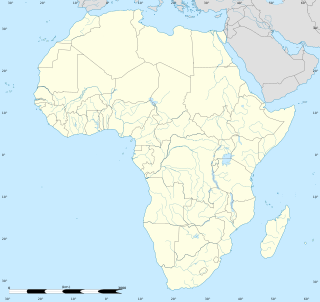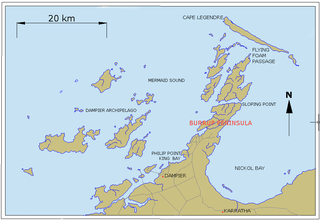Until the second half of 2002, Sudan's economy boomed on the back of increases in oil production, high oil prices, and large inflows of foreign direct investment. GDP growth registered more than 10% per year in 2006 and 2007. From 1997 to date, Sudan has been working with the IMF to implement macroeconomic reforms, including a managed float of the exchange rate. Sudan began exporting crude oil in the last quarter of 1999.

A World Heritage Site is a landmark or area which is selected by the United Nations Educational, Scientific and Cultural Organization (UNESCO) as having cultural, historical, scientific or other form of significance, and is legally protected by international treaties. The sites are judged important to the collective interests of humanity.

In archaeology, rock art is human-made markings placed on natural stone; it is largely synonymous with parietal art. A global phenomenon, rock art is found in many culturally diverse regions of the world. It has been produced in many contexts throughout human history, although the majority of rock art that has been ethnographically recorded has been produced as a part of ritual. Such artworks are often divided into three forms: petroglyphs, which are carved into the rock surface, pictographs, which are painted onto the surface, and earth figures, formed on the ground. The oldest known rock art dates from the Upper Palaeolithic period, having been found in Europe, Australia, Asia and Africa. Archaeologists studying these artworks believe that they likely had magico-religious significance.

Saharan rock art is a significant area of archaeological study focusing on artwork carved or painted on the natural rocks of the central Sahara desert. The rock art dates from numerous periods starting c. 12,000 years ago, and is significant because it shows the culture of ancient African societies.

The Merowe Dam, also known as Merowe High Dam, Merowe Multi-Purpose Hydro Project or Hamdab Dam, is a large dam near Merowe Town in northern Sudan, about 350 kilometres (220 mi) north of the capital Khartoum. Its dimensions make it the largest contemporary hydropower project in Africa. It is situated on the river Nile, close to and inundating the 4th Cataract where the river divides into multiple smaller branches with large islands in between. Merowe is a city about 40 kilometres (25 mi) downstream from the construction site at Hamdab. The main purpose for building the dam was the generation of electricity.

The Angono Petroglyphs is the oldest known work of art in the Philippines. The site is located in the province of Rizal. There are 127 human and animal figures engraved on the rockwall probably carved during the late Neolithic, or before 2000 BC. These inscriptions clearly show stylized human figures, frogs and lizards, along with other designs that may have depicted other interesting figures but erosion may have caused it to become indistinguishable. The engravings are mostly symbolic representations and are associated with healing and sympathetic magic. The site is sacred for indigenous Tagalog folk religion and is believed to be a home for anitos.

Europa Nostra is a pan-European Federation for Cultural Heritage, representing citizens’ organisations that work on safeguarding Europe's cultural and natural heritage. It is the voice of this movement to relevant international bodies, in particular the European Union, the Council of Europe and UNESCO. It has consultative status with UNESCO and is recognised as an NGO partner.

Murujuga, usually known as the Burrup Peninsula, is an island in the Dampier Archipelago, in the Pilbara region of Western Australia, containing the town of Dampier. Originally named Dampier Island after the English navigator William Dampier, it lies 3 km off the Pilbara coast. In 1963 the island became an artificial peninsula when it was connected to the mainland by a causeway for a road and railway. In 1979 Dampier Peninsular was renamed Burrup Peninsular after Mt Burrup, the highest peak on the island, which had been named after Henry Burrup, a Union Bank clerk murdered in 1885 at Roebourne.
Global Heritage Fund (GHF) is a non-profit organization that operates internationally.
Founded in California in 2002, GHF says it has since then invested over $25 million and secured $20 million in co-funding for 19 global heritage sites to ensure their sustainable preservation and responsible development.
The World Monuments Watch is a flagship advocacy program of the New York-based private non-profit organization World Monuments Fund (WMF) that calls international attention to cultural heritage around the world that is threatened by neglect, vandalism, conflict, or disaster.
The World Monuments Watch is a flagship advocacy program of the New York-based private non-profit organization, World Monuments Fund (WMF) that is dedicated to preserving and safeguarding the historic, artistic, and architectural heritage of humankind.
Egypt's environmental problems include water scarcity, air pollution, damage to historic monuments, and animal welfare issues.
The Nile River is a major resource for the people living along it, especially thousands of years ago. The El Salha Archaeological Project discovered an abundance of evidence of an ancient boat that traveled the Nile River dating back to 3,000 years ago. Pictographs and pebble carvings were uncovered, indicating a boat more advanced than a simple canoe. This evidence of a progressed Nile boat includes a steering system which may have been used in the Nile for fishing and transportation.
Saving Our Vanishing Heritage: Safeguarding Endangered Cultural Heritage Sites in the Developing World was a report released by Global Heritage Fund on October 17, 2010. It illuminated five accelerating man-made threats facing global heritage sites in developing countries: development pressures, unsustainable tourism, insufficient management, looting, and war and conflict.
The Sudans is a region in Africa comprising the countries of Sudan and South Sudan.











